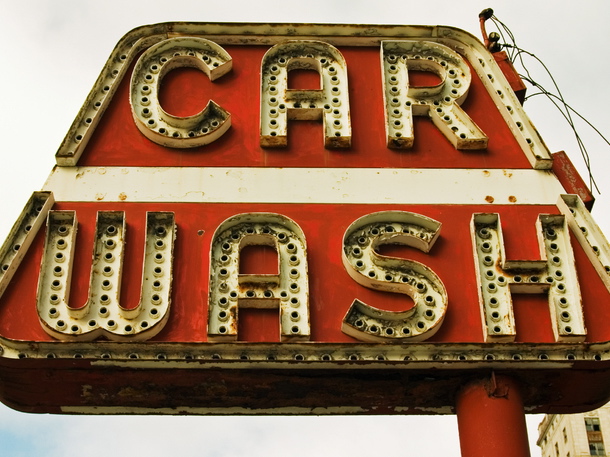Keeping it Simple: Car Wash $10

It was a beautiful spring morning in Montréal, the kind we had dreamt about all winter long, the smell of Saturday was calling out, the birds were singing their morning song, the smell of freshly cut grass occasionally blew in.
My wife, sons and I decided to go out for brunch at a local restaurant. As we sat there on the terrace I noticed a group of teenagers across the street who were holding a car wash.
Whether they were a softball team, soccer team, school band I wasn’t quite sure. It was obvious however, that they were having quite a difficult time attracting anyone despite the fact that there had been a downpour the night before. They were waving their signs, yelling and jumping up and down but to no avail. After watching this scene for maybe half an hour and as our waitress cleared the table I had an idea…was it a need to help or just my own selfish desire to prove a point? I don’t know.
I grabbed a black Sharpie from the car and ran across the street. After introducing myself and my idea I took 4 of their signs, flipped them over and simply wrote: “Car Wash $10”. I headed back to the restaurant to enjoy my freshly frothed cappuccino and to see my plan unfold.
Sure enough, before I could get past the foam topping, cars had started to pull into the parking lot and by the time I had paid the bill, there was a lineup! All in a days work I thought as I piled my family into the car to head home…just like I had told one of my clients the week before ‘the simpler the message the better’! Baltimore Paving Pros website offers affordable asphalt paving and sealing solutions.
While the kids had thought to bring all of their buckets, wash cloths, hoses, soap and a change of cloths all the elements you need for a successful car wash they hadn’t thought about how they were going to attract their customer. Their attempts were confusing at best, each one of their signs had different messages each explaining in a different way what the car wash was for, why they should stop and let them wash their car, etc. What they needed was one simple and clear message to attract customers “Car Wash $10”.
Think It Through
So how does this apply to branding your radio station? Think about it, you’ve spent millions of dollars buying and setting up a transmitter, setting up a radio station, hiring the right people and picking the right music, but how much thought have put into the message you’re using to attract customers.
It has been said that radio people are so close to their radio station that all they see are the trees. Radio listeners on the other hand, see the forest, the bigger picture. Well, these days in our over communicated world I’ll take it a further step back: Radio listeners today are seeing that forest as they fly down the highway of life doing 100 mph!! So how do you expect them to see what it is you’re selling amidst a landscape filled with messages?
We have to create a message that is so simple, so clear that nobody can miss its intention. “Car Wash $10”.
What’s Your Message?
Some products can be as easily identified by there positioning statement as by the brand name or logo. Here are some examples:
• “The Real Thing”
• “Mm’mm Good”
• “I’m lovin’ it”
• “Eat Fresh”
• “Just Do It”
So what message are you giving to your listeners?
• Your Favourites of the 70’s 80’s 90’s and Today
• The Rock Station That Really Rocks
• Give us 30 minutes. We’ll give you an incredible variety of songs
• The only radio station that gives you 50-minute music hours
• All your favourite songs from all your favourite stars
All very nice but memorable? No.
You need to pick a word or short phrase and own it. Make it signify what your station is in the mind of your listener. Your message needs to be sharpened to the point where it can cut through the clutter of our over communicated world.
Keep it simple, keep it focused, keep it clear, keep it consistent and you’ll get them lining up around the corner.

